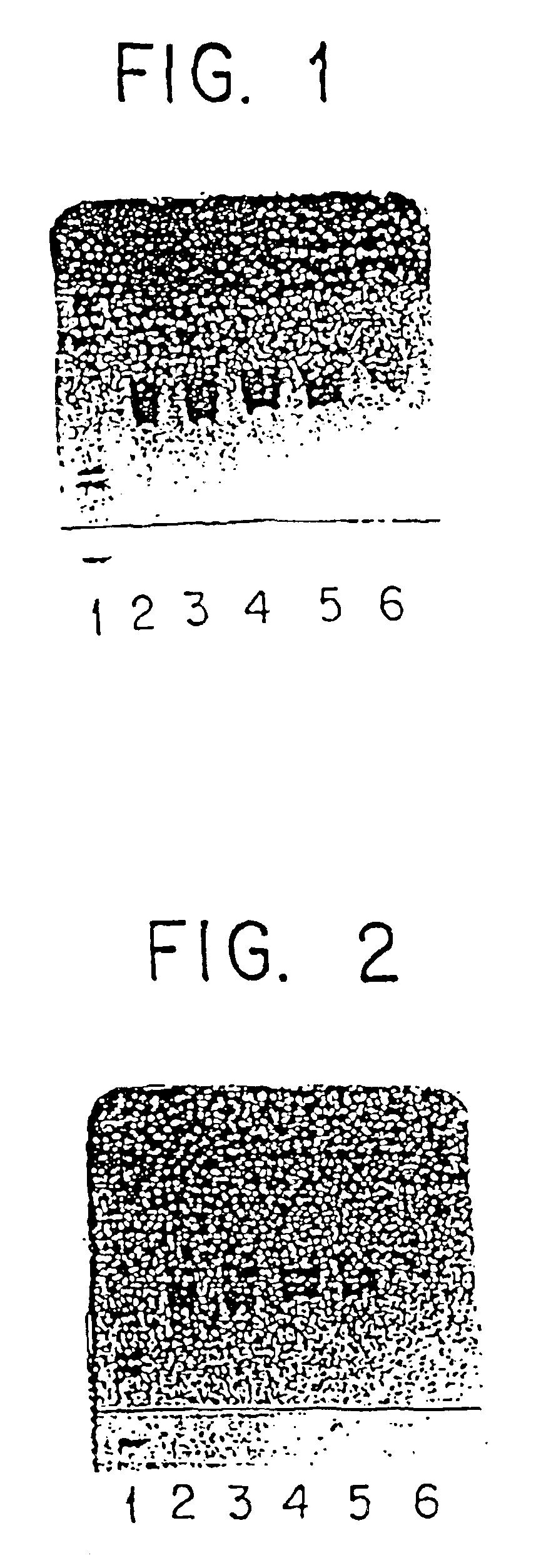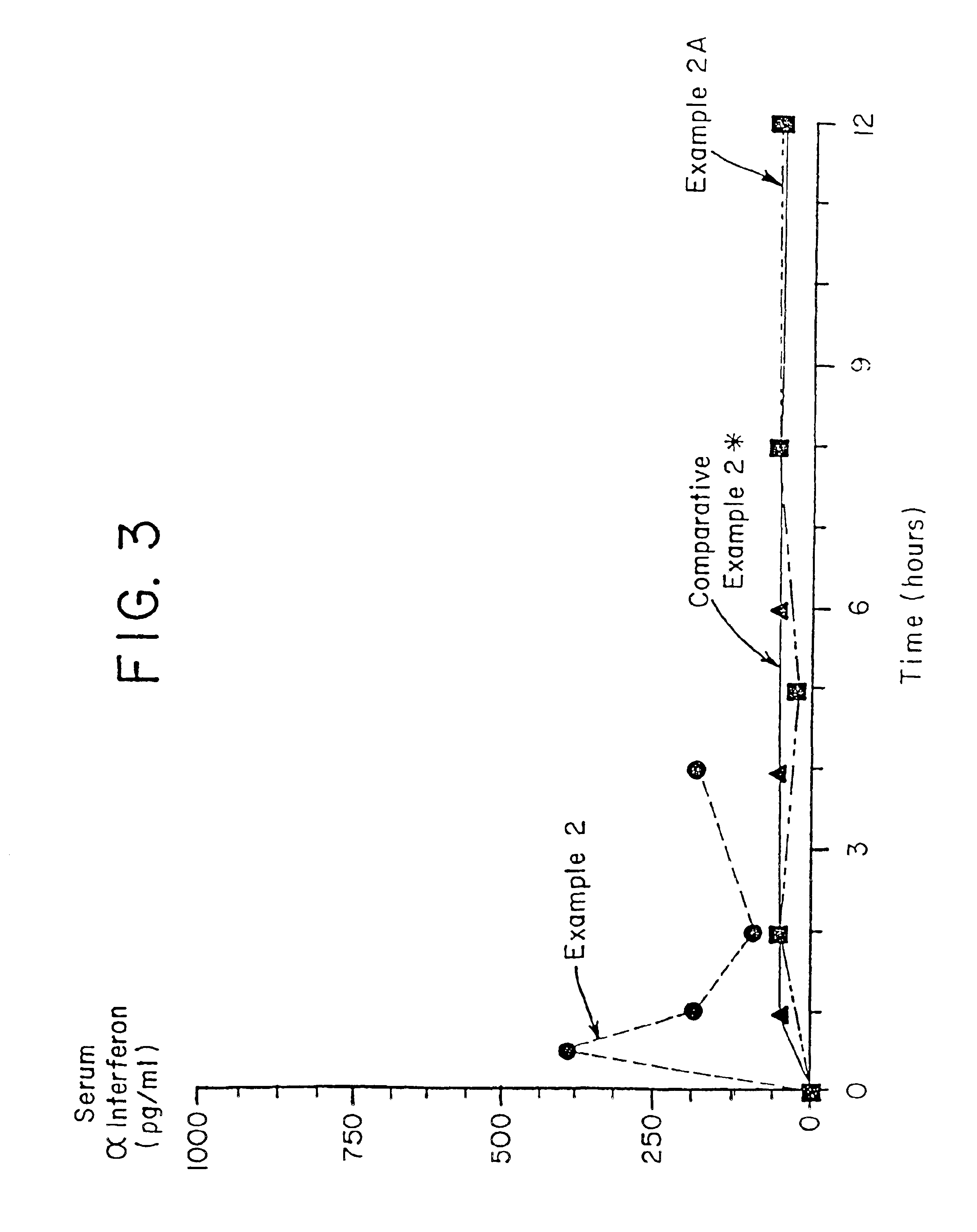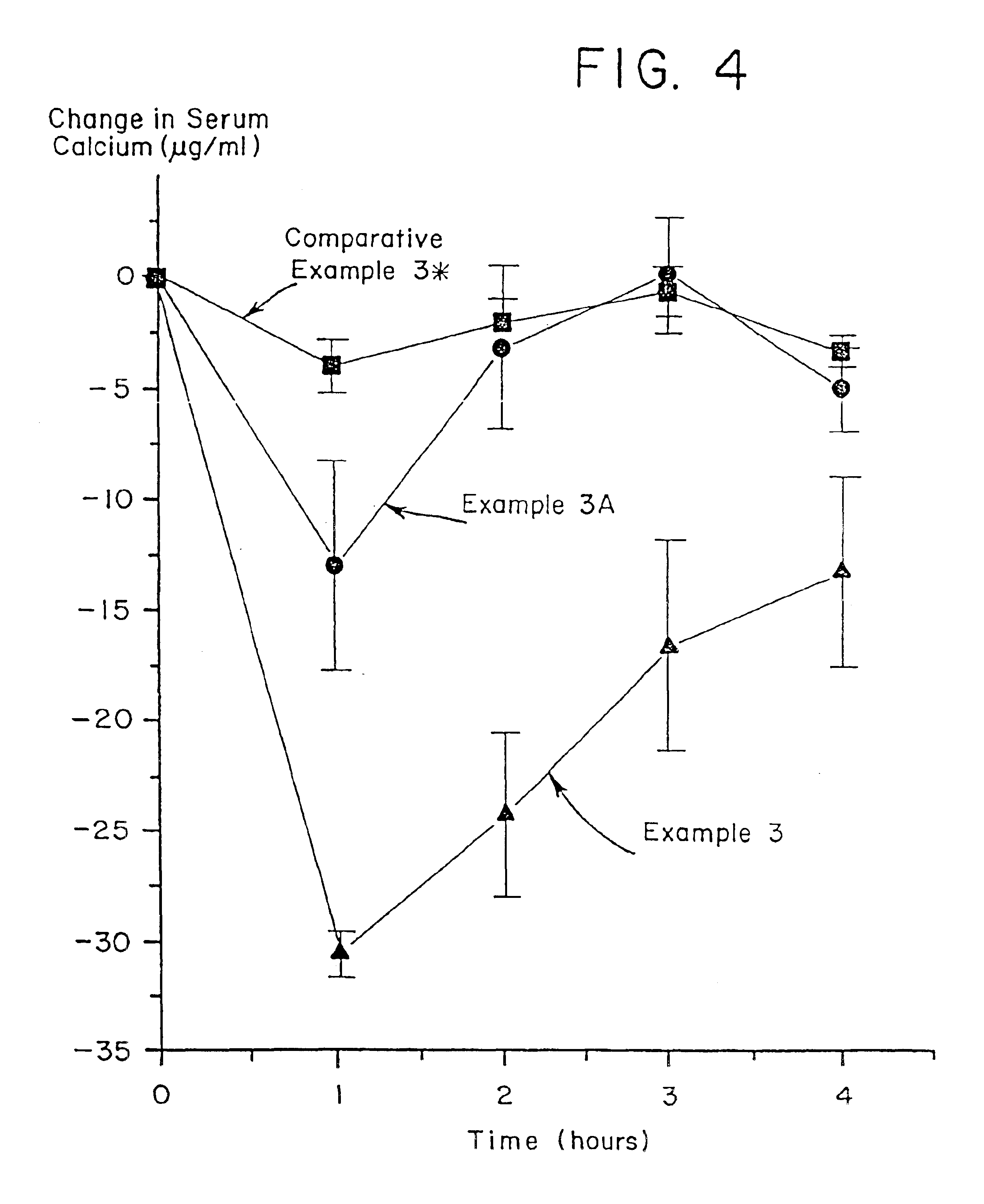Active agent transport systems
a technology of active agents and transport systems, applied in the direction of amide active ingredients, peptides, microcapsules, etc., can solve the problems of limiting the conventional means of delivering biologically active agents to their intended targets, affecting the effect of toxicity, and affecting the effect of oral delivery
- Summary
- Abstract
- Description
- Claims
- Application Information
AI Technical Summary
Benefits of technology
Problems solved by technology
Method used
Image
Examples
example 1
α-Interferon Native Gels
[0192]Native gradient gels (Pharmacia) were run with 647 μg / ml of α-interferon, (Intron-A—Schering-Plough) and increasing amounts (10-500 mg / mL) of perturbant (mixture of L-Valine, L-Leucine, L-phenylalanine, L-lysine and L-arginine modified with benzenesulfonylchloride) (valine—7.4%, leucine—16.5%, phenylalanine—40.3%, lysine—16.2% and arginine—19.6%). 4 μl of material were loaded onto the gel using a 6 / 4 comb for loading.
[0193]Results are illustrated in FIG. 1.[0194]Lane 1=High molecular weight marker (Bio-Rad)−1:20 dilution w / dH2O−(5 μl−>100 μl).[0195]Lane 2=α-interferon A (647 μg / mL) control 5 μl+5 μl Bromophenol Blue (BPB)−(1.29 μg loaded).[0196]Lane 3=α-interferon+perturbant (10 mg / mL)−50 μl α-interferon+50 μl BPB=100 μl (1.29 μg loaded).[0197]Lane 4=α-interferon+perturbant (50 mg / mL) 50 μl α-interferon+50 μl BPB=100 μl (1.29 μg loaded).[0198]Lane 5=α-interferon+perturbant (100 mg / mL ) 50 μl α-interferon+50 μl BPB=100 μl (1.29 μg loaded).[0199]Lane 6=α-...
example 1a
α-Interferon Native Gradient Gel
[0200]The method of Example 1 was followed substituting the thermal condensation product of glutamic acid, aspartic acid, tyrosine, and phenyl-alanine (Glu-Asp-Tye-Phe) that was fractionated through a 3000 molecular weight cut-off filter for the perturbant.
[0201]Results are illustrated in FIG. 2.
Samples
[0202]Lane 1=High Molecular Weight marker (Bio-Rad).[0203]Lane 2=α-interferon (647 μg / mL)−5 μl+5 μl BPB control.[0204]Lane 3=α-interferon+perturbant (10 mg / mL)−50 μl+50 μl BPB=100 μl.[0205]Lane 4=α-interferon+perturbant−50μl+50 μl BPB=100 μl.[0206]Lane 5=α-interferon+perturbant (100 mg / mL)−50 μl Intron A+50 μl BPB=100 μl.[0207]Lane 6=α-interferon+perturbant (500 mg / mL)−5 μl Intron A+50 μl BPB=100 μl.
[0208]Examples 1 and 1 A illustrate that α-interferon alone (lane 2 in FIGS. 1 and 2) banded at the appropriate molecular weight (approximately 19,000 Daltons). As the amount of perturbant added is increased in each subsequent lane relative to a fixed concen...
example 2
Oral Administration of α-interferon and Perturbant to Rats
[0209]Male Sprague-Dawley rats (average weight approximately 250 mg) were fasted overnight on wire racks with no bedding. Prior to dosing, animals were anesthetized with a combination ketamine / thorazine subcutaneous. Dosing solutions of the composition prepared according to Example 1 at 500 μg / kg were administered via oral gavage through a 10-12 cm rubber catheter attached to a 1 cc syringe containing the dosing solution. Blood samples were drawn by tail vein bleeding at the designated time points. Serum was prepared and frozen at −70° C. until ready for assay. Serum samples were assayed by ELISA (Biosource International, Camarillo, Calif., Cytoscreen Immunoassay Kit™, Catalog # ASY-05 for human IFN-α).
[0210]Results are illustrated in FIG. 3.
PUM
| Property | Measurement | Unit |
|---|---|---|
| molecular weight | aaaaa | aaaaa |
| molecular weight | aaaaa | aaaaa |
| reaction time | aaaaa | aaaaa |
Abstract
Description
Claims
Application Information
 Login to View More
Login to View More - R&D
- Intellectual Property
- Life Sciences
- Materials
- Tech Scout
- Unparalleled Data Quality
- Higher Quality Content
- 60% Fewer Hallucinations
Browse by: Latest US Patents, China's latest patents, Technical Efficacy Thesaurus, Application Domain, Technology Topic, Popular Technical Reports.
© 2025 PatSnap. All rights reserved.Legal|Privacy policy|Modern Slavery Act Transparency Statement|Sitemap|About US| Contact US: help@patsnap.com



